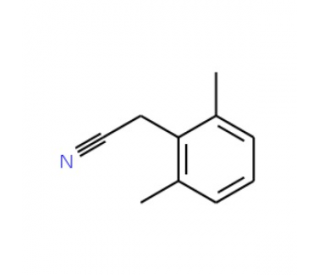详细说明
Species Reactivity
Human
Specificity
Detects human Tie-2 in ELISAs. In sandwich immunoassays, no cross-reactivity or interference with recombinant human (rh) Tie-1, recombinant mouse Tie-2, recombinant rat Tie-2, recombinant zebrafish Tie-2, rhAng1, 2, or 4 is observed.
Source
Monoclonal Mouse IgG 2A Clone # 83708
Purification
Protein A or G purified from hybridoma culture supernatant
Immunogen
Mouse myeloma cell line NS0-derived recombinant human Tie‑2
Ala23-Lys745
Accession # AAA61139Formulation
Lyophilized from a 0.2 μm filtered solution in PBS with Trehalose. *Small pack size (SP) is supplied as a 0.2 µm filtered solution in PBS.
Label
Unconjugated
Applications
Recommended
ConcentrationSample
Human Tie-2 Sandwich Immunoassay
Reagent
ELISA Capture (Matched Antibody Pair)
2-8 µg/mL
Human Tie‑2 Antibody (Catalog # )
ELISA Detection (Matched Antibody Pair)
0.5-2.0 µg/mL
Human Tie‑2 Biotinylated Antibody (Catalog # )
ELISA Standard
Recombinant Human Tie-2 Fc Chimera Protein, CF (Catalog # )
Please Note: Optimal dilutions should be determined by each laboratory for each application. are available in the Technical Information section on our website.
Preparation and Storage
Reconstitution
Reconstitute at 0.5 mg/mL in sterile PBS.
Shipping
The product is shipped at ambient temperature. Upon receipt, store it immediately at the temperature recommended below. *Small pack size (SP) is shipped with polar packs. Upon receipt, store it immediately at -20 to -70 °C
Stability & Storage
Use a manual defrost freezer and avoid repeated freeze-thaw cycles.
12 months from date of receipt, -20 to -70 °C as supplied.
1 month, 2 to 8 °C under sterile conditions after reconstitution.
6 months, -20 to -70 °C under sterile conditions after reconstitution.
Background: Tie-2
Tie-1/Tie (tyrosine kinase with Ig and EGF homology domains 1) and Tie-2/Tek comprise a receptor tyrosine kinase (RTK) subfamily with unique structural characteristics: two immunoglobulin-like domains flanking three epidermal growth factor (EGF)-like domains and followed by three fibronectin type III-like repeats in the extracellular region and a split tyrosine kinase domain in the cytoplasmic region. These receptors are expressed primarily on endothelial and hematopoietic progenitor cells and play critical roles in angiogenesis, vasculogenesis and hematopoiesis. Human Tie-2 cDNA encodes a 1124 amino acid (aa) residue precursor protein with an 18 residue putative signal peptide, a 727 residue extracellular domain and a 354 residue cytoplasmic domain. Two ligands, Angiopoietin-1 (Ang-1) and
Angiopoietin‑2 (Ang-2), which bind Tie-2 with high-affinity have been identified. Ang-2 has been reported to act as an antagonist for Ang-1. Mice engineered to overexpress Ang-2 or to lack Ang-1 or Tie-2 display similar angiogenesis defects.
References:
Partanen, J. and D.J. Dumont (1999) Curr. Top. Microbiol. Immunol. 237:159.
Takakura, N. et al. (1998) Immunity 9:677.
Procopio, W. et al. (1999) J. Biol. Chem. 274:30196.
Long Name:
Tyrosine Kinase with Immunoglobulin and Epidermal Growth Factor Homology Domains 2
Entrez Gene IDs:
7010 (Human); 21687 (Mouse); 30747 (Zebrafish)
Alternate Names:
angiopoietin-1 receptor; CD202b antigen; CD202b; EC 2.7.10; EC 2.7.10.1; hTIE2; p140 TEK; soluble TIE2 variant 1; soluble TIE2 variant 2; TEK tyrosine kinase, endothelial; TEK; Tie2; Tie-2; TIE2CD202b; Tunica interna endothelial cell kinase; Tyrosine-protein kinase receptor TEK; Tyrosine-protein kinase receptor TIE-2; venous malformations, multiple cutaneous and mucosal; VMCM; VMCM1











 粤公网安备44196802000105号
粤公网安备44196802000105号